Arsenal of Democracy: The Mystery Tank
Modern tanks are awesome. Take the M1 Abrams for instance: A hulking, tracked, weaponized vehicle made from 70 tons of hardened steel and armor yet is still agile like a cat, can spin like a top and is powered by a jet engine. Interestingly enough, the Abrams was developed by Chrysler in the 1970s and built at the Detroit Tank Arsenal until 1996. The same tank arsenal that former Chrysler president KT Keller was inspired to build in 1940 after Dodge Brothers machinist turned vice president Fred Lamborn visited Rock Island Arsenal to view a prototype tank for WWII and discovered a bunch of recoil mechanisms in hiding. The same recoil mechanisms that Lamborn helped build in Detroit during WWI, over two decades prior.
You’re probably wondering why I decided to connect the Chrysler-developed present-day Abrams all the way back to the cannons the Dodge Brothers built 100 years ago. It’s not just because of the lineage of the brand, or that it’s all military work; no, it’s because of four photos I uncovered while digging through the archives, hidden amongst other Dodge Brothers artifacts, at the Meadow Brook mansion. First, let’s give some context, starting in 1917.
The Renault-designed FT from France was the light tank of choice by the Allies in these formative years of the Great War. The United States, pressed by folks like George Patton and John Pershing, realized that they needed their own tanks, too. These early models weren’t built for tank-on-tank violence, they were used to traverse “no man’s land” and to give some cover for exposed troops on the attack. Ford Motor Company, even after Henry’s open contempt for all aspects of the war itself, was asked to come up with a design to compete with the FT. But the reality was that they needed the things NOW and doing a ground-up design wasn’t gonna happen overnight. Eventually, Ford came up with a unique 3-ton tank, just not in time for battle. So the U.S. Army licensed the FT design from France and had a trio of American companies (Maxwell Motor, C.L. Best and Van Dorbe Ironworks) get to building a slightly modified version, called the M1917.
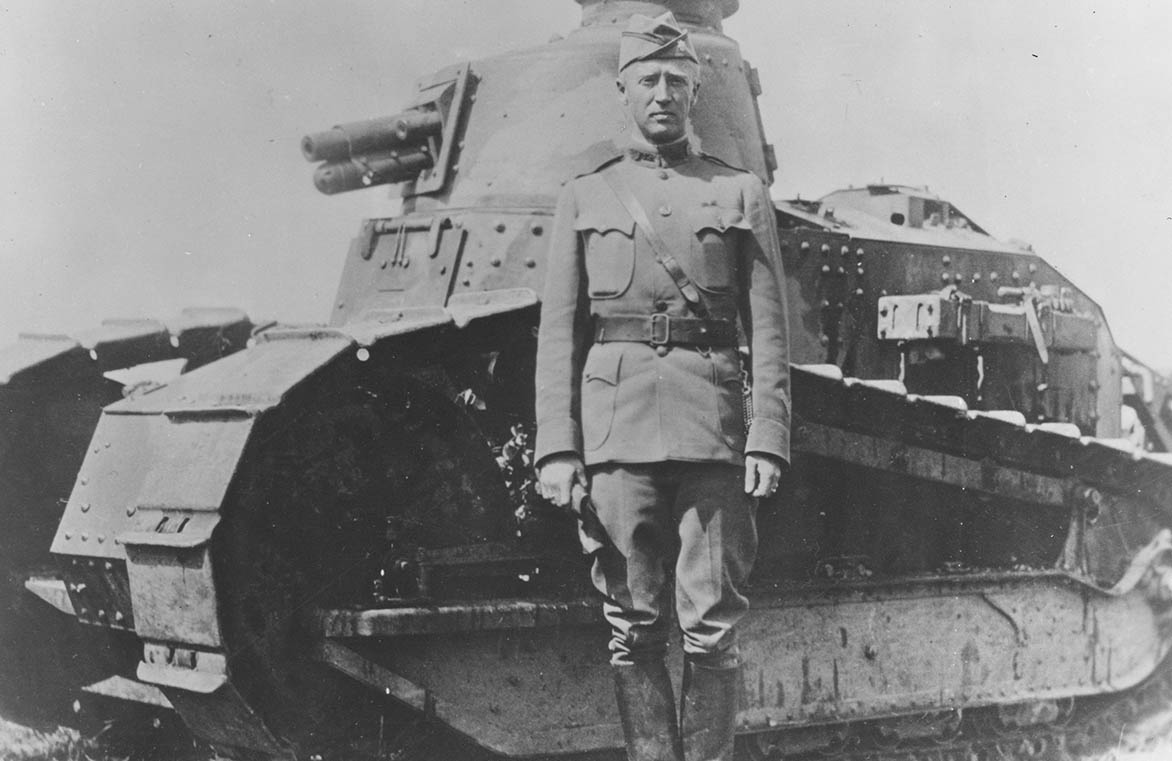
The M1917 did not make it to the field before the armistice was signed, either. Remember back in 1917 when John and Horace Dodge told the U.S. government and French officials that if they wanted Dodge to build howitzers to give them the prints and get out of the way? How they then proceeded to translate French prints into English, metric measurements into standard, then design and build 129 machines specially to create the parts for the recoil mechanisms in a matter of months? Well, the manufacturers slated to build the tanks didn’t fare quite as well:
“The project was beset by problems: the French specifications were metric and incompatible with American (imperial) machinery; coordination between military departments, suppliers, and manufacturers was poor; bureaucratic inertia, lack of cooperation from military departments, and possible vested interests delayed progress.”
After the war, nearly 1,000 M1917s were built. During the war, when they needed them the most, the United States Army was forced to borrow FTs from France.
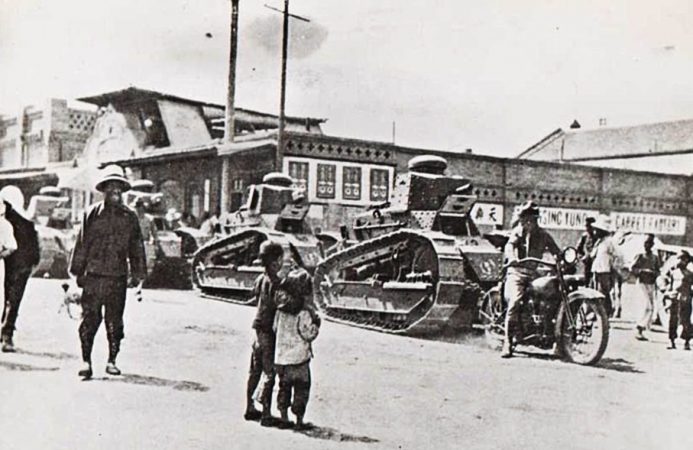
One might ask “why didn’t the military ask Dodge for help?” My guess would be that they were knee deep in the recoil mechanism project and just spread too thin to take on more work.
Or, perhaps, maybe they did help.
While digging through the archives in the attic at Meadow Brook Hall, archival curator Madelyn Rzadkowolski, brought these mysterious photos to my attention. They show a wooden prototype tank, in what appears to be a secret room, dated October 4, 1918, a month before the armistice was signed. While it looks much like the FT (and M1917), there are a few major differences. The proportions are different; the photos appear to show a tank with a longer wheelbase and the front wheel is set farther ahead.
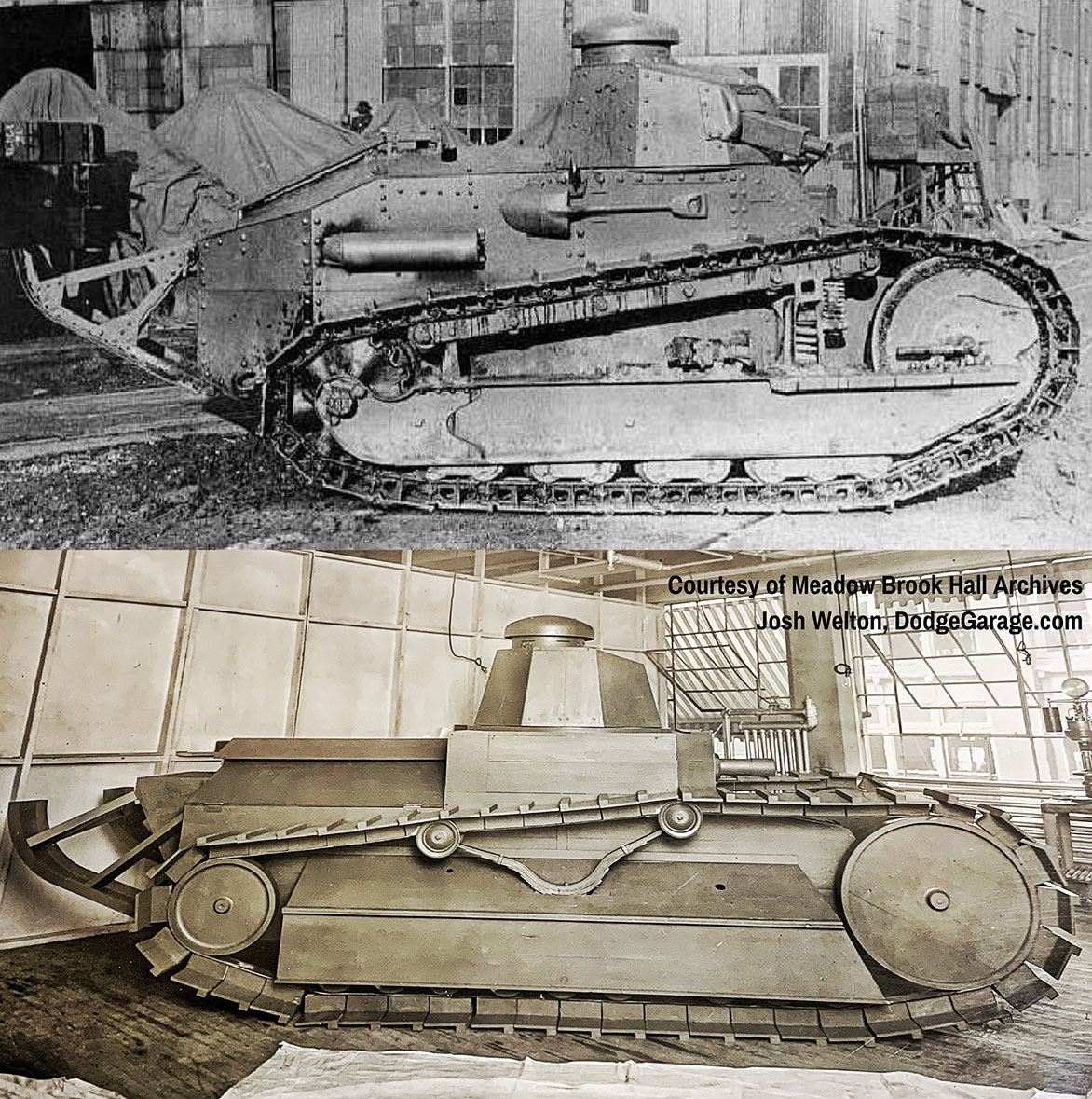
The track tensioner is based on leaf springs (much like Ford would utilize in their smaller 3-ton M1918 tank) rather than the coil spring/lever setup the FT had. While there’s a machine gun tube, there’s no barrel coming out of the turret; probably not a big deal in a wood mockup, to be changed at a later date. One of the more interesting features is at the rear of the vehicle. The tail section, which kind of acted like a wheelie bar in modern terms, is split into two skid plates on either side. In contrast, the French tank had a single curved plate in the middle. In the middle rear of the tank where the skid plate would normally mount on the FT, on this prototype there’s a grill/deflector to presumably expel exhaust from the engine.
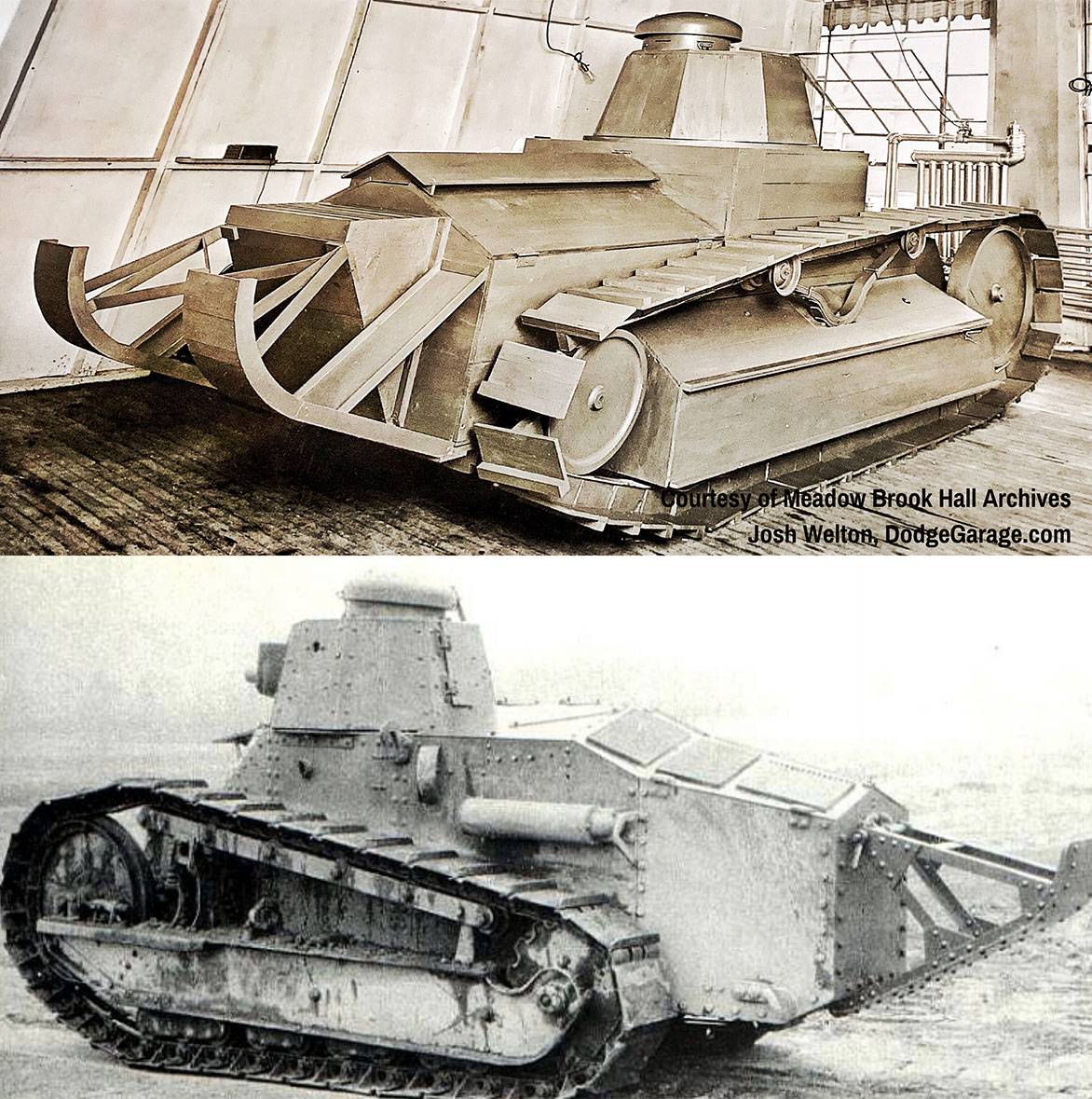
Having an engine with enough power to move the 6-ton tank while keeping it cool had been an issue with early versions. It leads one to ponder … what would have been under the hood? Were the Dodge Brothers cooking up a new drivetrain?
I recently had an incredible conversation with Dr. Charles K. Hyde, who is kind of the go-to guy for these kinds of things. A recently retired professor of History at Wayne State University in Detroit, he wrote “The Arsenal of Democracy”, “The Dodge Brothers: The Men, the Motor Cars, and the Legacy”, “Riding the Roller Coaster: A History of the Chrysler Corporation” and many more books on Detroit and industry throughout the years, and in doing so, he did an insane amount of research. One of the reasons I wanted to talk to him was to ask about these photos.
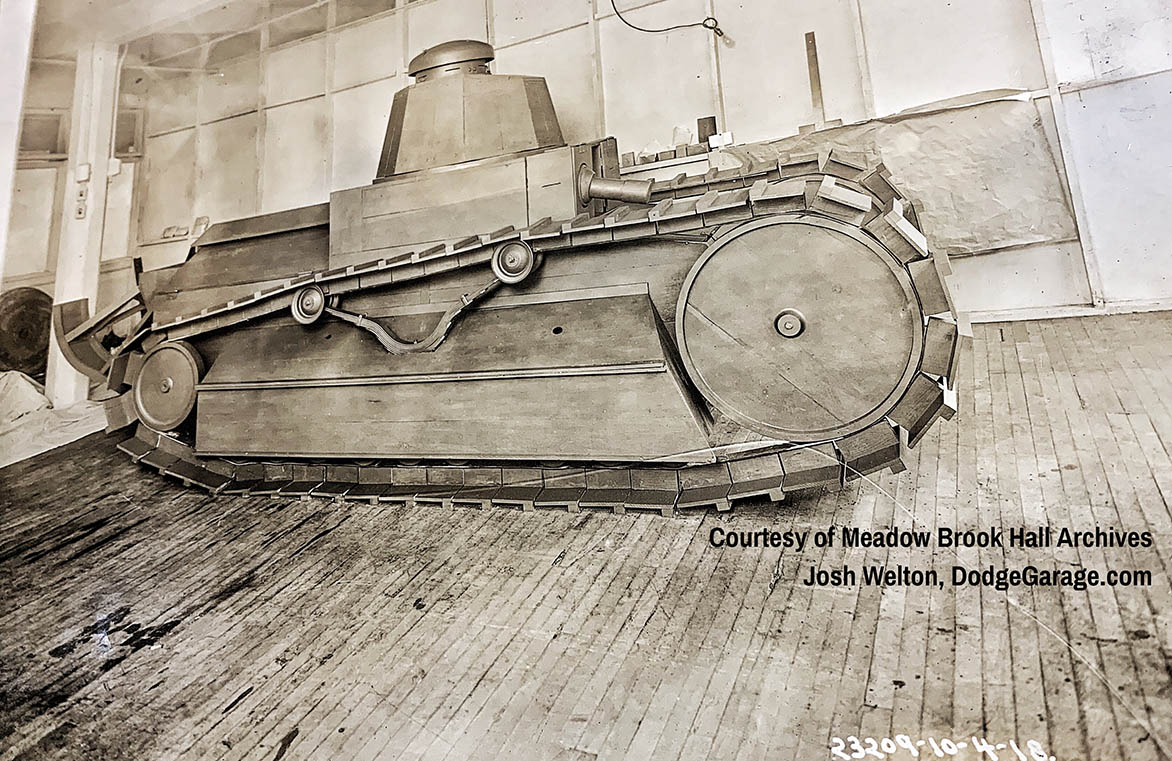
He’d spent a bit of time looking through the archives at Meadow Brook, but the collection of pictures and documents and brochures and invoices are a bit disorganized, and there’s so much of it. It would have been impossible to go through everything. He said he’d never seen the pictures before! I felt like I’d just stumped Yoda.
Working for a military prototype shop myself, the possibilities for why the wooden mockup was created are many. The Army could have asked for the Dodge Brothers’ take on the FT and what they’d change to improve it. Or they might have been asked to help the contractors who were building the American version, especially when the project became bogged down by problems Dodge had already worked through. I’m pretty sure Singer and Rock Island came to them for help on the 75mm recoil mechanisms in much the same way. Another theory is that it was going to be used in parades to sell war bonds. I don’t buy that because A) it’s not as cool and B) they wouldn’t make the changes they made for a simple parade vehicle.
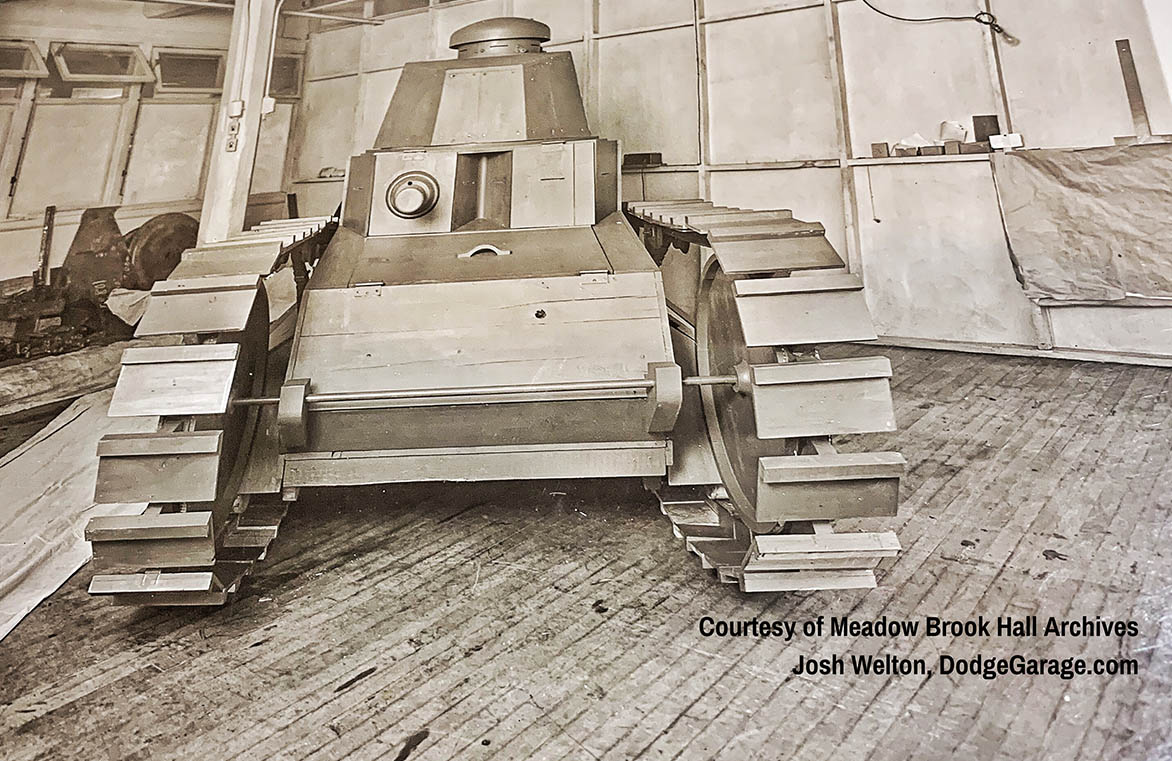
Whatever it was, these photos were taken a month before the armistice was signed where the Germans and the Allies agreed to negotiate what became the Treaty of Versailles. While manufacturers continued what they started by partially finishing their wartime orders, the American defense industry was shelved for most of the next two decades and Horace and John, as far as anyone knows, never built a functioning tank. Little did they know that what they did build in 1918 was to be, in 1940, the spark that inspired the Detroit Tank Arsenal.
Many thanks to Madelyn Rzadkowolski, archival curator at Meadow Brook Hall for granting access to original documents from the Dodge Brothers era, and to Dr. Charles Hyde for his insight and encouragement.
Past Arsenal of Democracy installments:
Arsenal of Democracy: Dodge Brothers Build A Reputation
Arsenal of Democracy: America’s First Motorized Attack
Arsenal of Democracy: Cannons
Arsenal of Democracy: Hidden Treasures
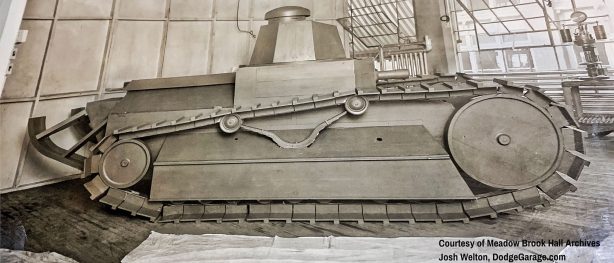
0 Comments